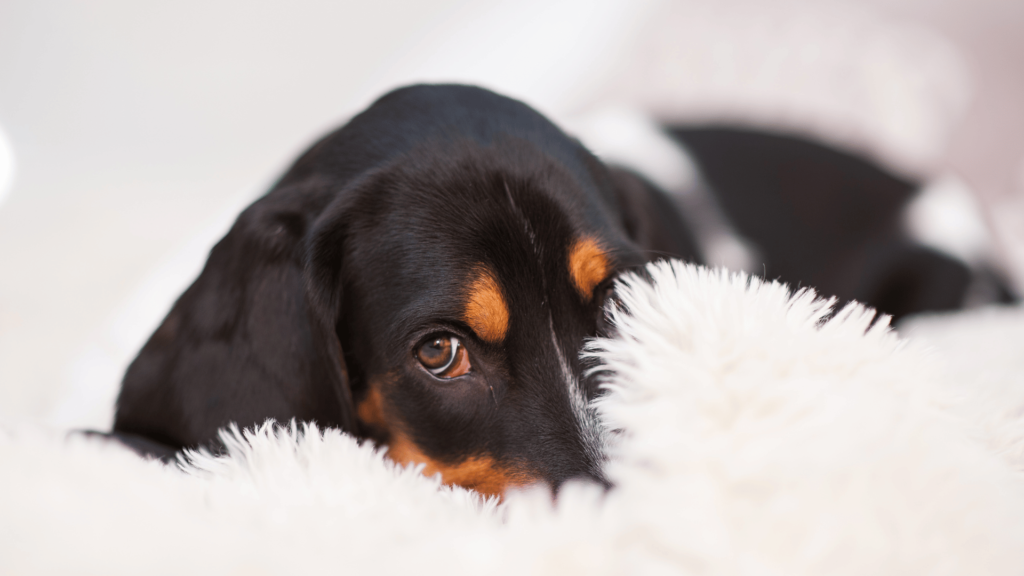Picking a new pup is an exciting time for a fur parent. You’ve done the research, decided which dog breed to get, located a reputable breeder, and arranged a visit. Finally, it’s time to pick the best pup in the pack!
So, should you choose the biggest puppy in the litter? The short answer is yes. The largest puppy is often a better pick, especially if it’s your first time getting a furry companion. But that’s not the only thing to consider when choosing a puppy from the litter.
In this article, we’re going to explore how you can choose the right puppy in the litter for your home.
Should You Choose the Biggest Puppy in the Litter?
Generally, a puppy will inherit their size from their parents. Still, puppies can have different sizes. Sometimes, the small pup in the litter can catch up within one to two years if you give them proper care.
As a new fur parent though, it’s a good idea to pick the biggest puppy in the litter.
For starters, a puppy that’s bigger than their littermates is likely to be healthier. That pup also tends to be the fastest and fattest one in the bunch!

Is the Biggest Puppy in the Litter the Healthiest?
Usually, the biggest puppy in the litter gets more attention from the mother. On top of that, they’re more dominant in getting the resources they need, like milk or food. As a result, they grow and develop faster than their littermates.
However, the size of the bigger pup is also an indication that they refuse to share food with their littermates. Hence, they might have dominant tendencies when they grow up as an adult dog.
Which Puppy in the Litter Is Best?
When choosing the right puppy that’ll suit your home best, it’s important to consider other factors than just the size of the pup.
You should also take a closer look at their physical characteristics. For instance, the best pup shouldn’t have inflammation or discharge on their eyes, nose, ears, and genitalia.
Aside from that, they shouldn’t have overshot or undershot jaws. In addition, keep in mind that a soft coat is an indicator that the little pup is healthy.
In addition, spend some time with the puppies. Having one-on-one interaction with them can help you get to know them and determine which pup is best for you.
Every puppy has their own personality and you may gravitate towards a pup that aligns with who you are as a person.
Is the Biggest Puppy the Alpha?
The puppy’s size isn’t a definitive indicator of an alpha puppy. Most of the time though, the biggest puppy in the litter is the more dominant one than the littermates. A pup’s dominance can be a desirable trait, especially for working roles.
Some working roles for dogs are guarding or watchdogs, herding, and sled dogs. Other examples are hunting, fishing, therapy work, and search and rescue.
However, keep in mind that the alpha isn’t always the biggest one in the litter. The alpha puppy is usually the one who always takes charge. Hence, observe which puppy is the first one to drink, eat, and sleep in a corner.
Is it Better to Get a Puppy From a Large or Small Litter?
The size of the litter that’ll be best for you depends on what dog breed you want. The breed determines the size of the litter. For instance, a large-breed dog can have up to 12 puppies.
In contrast, a dog breed with a small body can only produce two to six puppies, so it’s not safe for the mother to carry more offspring. In fact, it’s possible for a small dog breed to bear only one puppy. In this case, the puppy is called a singleton.
Some small breed types that produce small litter are Shih Tzus, Chihuahuas, Pomeranians, Yorkies, and Toy Poodles. On the other hand, dog breed types with large litter are Labrador Retrievers, German Shepherds, Great Danes, Cane Corsos, and Bullmastiffs.

The age of the male dog is another factor that can affect the size of the litter. For instance, a stud younger than five years old tends to produce a large litter. This means that his sperm is of good quality and can easily enter the female’s eggs.
In comparison, older male dogs will have a low sperm count.
What Should I Look For When Buying a Puppy From a Litter?
Size shouldn’t be your sole consideration when choosing the best pup for your home. Here’s what you should look for when buying a puppy from a litter:
Physical Characteristics
A healthy puppy should display the following characteristics:
- Well-rounded
- Soft and shiny coat
- Pink gums
- White teeth
- Sturdy legs
- Clear eyes
- Clean and odorless ears
- Nose with no discharge
Sociability
A puppy with social skills can adapt to many smells, sights, and sounds in his environment. Otherwise, you might face potential challenges when raising your dog. Therefore, you’ll need to test out a puppy’s sociability by observing how they interact with their littermates.
Look for a pup that joins the pack and doesn’t retreat in a corner.
Avoid a pup that’s too demanding for attention and plays too rough. Instead, choose the one who confidently approaches you.
What to Avoid When Choosing a Puppy
Most puppies grow up to be healthy and well-behaved adult dogs when raised correctly. However, you’ll have a greater chance of finding the right buddy by considering some factors before making a choice.
Aside from that, here’s what you should avoid when choosing a puppy:
The Smallest Puppy
Usually, the smallest puppy in the litter, or the runt, is the pup who doesn’t get enough milk and food, which likely happens in a crowded puppy litter.
Unfortunately, the runt puppy isn’t a good choice for first-time fur parents. For instance, the pup needs special care because they are prone to congenital problems, parasites, and infections.
On top of that, it’s risky to pick the runt puppy if the pup is abnormally small, shows weakness, and indicates congenital deformities at birth. These are often signs of future health complications for the puppy.
The Shyest Puppy

Try to avoid picking the shyest puppy in the pack. Although the breed of the dog often affects their personality type, you should look out for a youngster that’s too shy. In fact, the shyest pup tends to become fearfully timid of dogs and human interaction. This can lead to anxiety issues, such as fear based aggression, or separation anxiety.
The pup shouldn’t cower or freeze when you pet them. Additionally, the puppy shouldn’t be running away or hiding in a corner if you try to approach.
In this case, the pup might need a lot of training to build their confidence and allow them to be comfortable around humans and dogs. On top of that, it’ll take plenty of time and patience from their owner.
Overall, a shy puppy isn’t suitable for families with children. Instead, the pup is ideal with a single owner with lots of time to give the attention and training they need.
The Wrap-Up
So, should you choose the biggest puppy in the litter? It might be a good idea to pick the largest pup in the pack because they tend to be healthier than their siblings.
Besides that, the biggest puppy has dominant tendencies. The trait is great for herding, guarding, hunting, fishing, and other working roles. So consider how your dog will integrate into your life.
Aside from the size, consider other factors to help you pick the best puppy for your home. For instance, a healthy pup should have social skills. They should also have ideal physical characteristics, such as a shiny coat, sturdy legs, white teeth, clear eyes, and odorless ears.
Avoid picking a puppy that’s too small as they can be prone to health risks and often requires special care. Lastly, selecting the shyest pup in the litter isn’t suitable for families with children. This is because the puppy often needs a lot of training, time, and patience from his owner.




